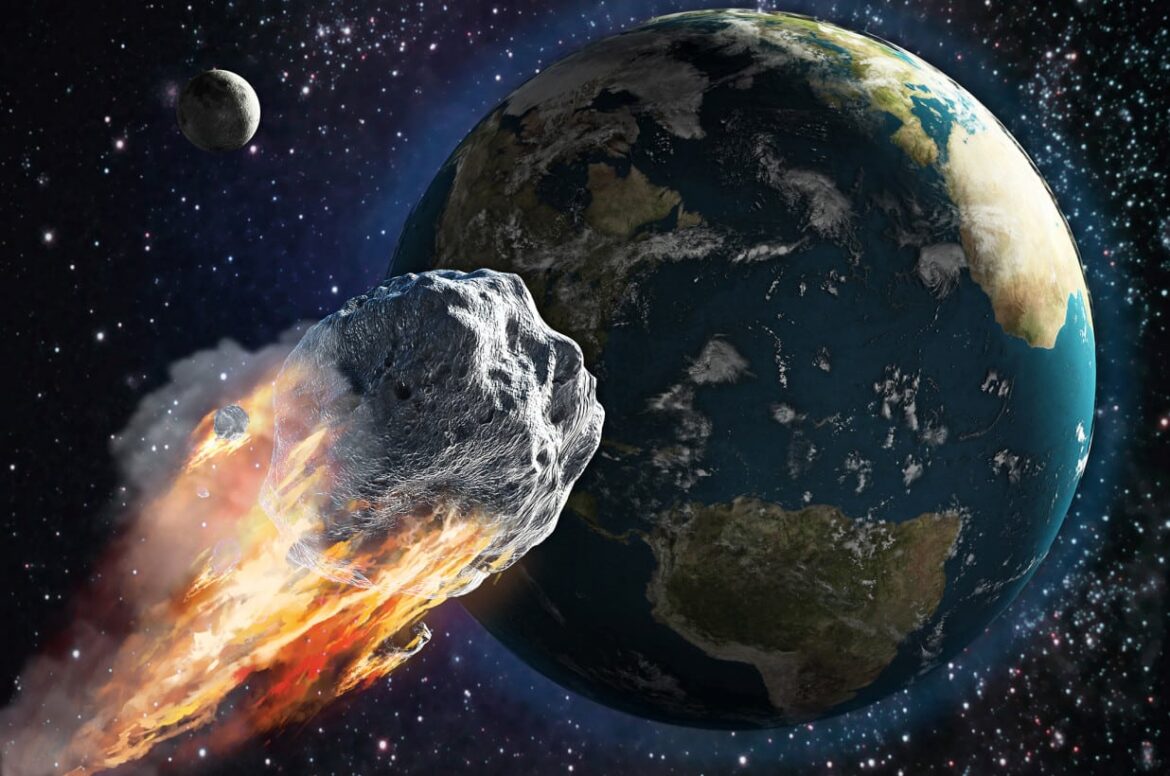In this list we have compiled the best-known asteroids in the universe. You can also refresh your astronomy knowledge about the celestial bodies and learn, among other things, how dangerous the currently known asteroids are for Earth.
Asteroid list: What is flying through space?
Before we introduce you to the most well-known asteroids, we will first clarify what astronomy understands by asteroids, where they occur and where their names come from.
- What are asteroids? Asteroids are rocks in space that are smaller than a dwarf planet but larger than a meteoroid. However, this is a very vague classification, as dwarf planets are about a thousand kilometres in diameter, while meteoroids are only a few centimetres to metres in size.
- Asteroid, meteoroid, meteor: what is what? As mentioned earlier, asteroids and meteoroids differ in size. When they enter the Earth’s atmosphere, they begin to glow due to the strong air friction. This glow is called a meteor, regardless of the celestial body. Shooting stars are now seen in the sky. If an asteroid is so large that it does not burn up completely, part of it hits the Earth’s surface. This piece of rock is now a meteoroid because of its size.
- Where are the asteroids located? As of today (March 2023), more than 1.2 million asteroids are known, with over a thousand new discoveries every week. Just under 90% of them are located in the asteroid belt, a circular orbit around the Sun that lies between Mars and Jupiter.
- How do asteroids get their names? When a new asteroid is discovered, it is first given a provisional name such as 2023 AB, which is made up of the year of discovery, among other things. From this point on, the discoverer has 10 years to christen his asteroid. Since there are few restrictions here, the asteroids Rumpelstilz, Jodiefoster or Mr. Spock exist alongside god names such as Iuno or Pallas.
The best known and most interesting asteroids
In the following list, we introduce you to five asteroids you should know about. Astronomers estimate that there are still several million undiscovered asteroids in space, which is why new, interesting asteroids can be added to this list all the time.
- Ceres: Guiseppe Piazzi gave this former asteroid this name in 1801 after he discovered it in an observatory in Sicily. This makes it the first asteroid to be discovered and named worldwide. Ceres is the name of the Roman patron goddess of Sicily. At 1,000 km in diameter, it was also the largest known asteroid, but is now classified as a dwarf planet.
- Pallas: After Ceres was classified as a dwarf planet, Pallas is now considered the largest known asteroid at present. It has a diameter of just under 550 kilometres and is also named after an ancient deity.
- Vesta: Although smaller than Pallas, this asteroid has a higher density and fewer craters and cracks on its surface, making it the heaviest asteroid known. Astrologers estimated its weight at 2.6 x 10 to the 20th power. It is also the only asteroid that can be seen with the naked eye if you are lucky.
- Eros: This name should be remembered because it was the first asteroid to be visited by a probe. In 2000, the NEAR space probe succeeded in landing on the asteroid, which is relatively small at 13x13x33 km.
- Ida: This asteroid is famous for having the first observed moon of its own. The approximately 60×40 km chunk of rock is orbited by the moon Dactyl, which takes a good day and a half to orbit.
The most dangerous known asteroids and what they can do
If you look up at the starry night sky with the naked eye, you can see some craters on the moon that asteroid impacts have caused there. These can also be found on Earth from earlier times. Nevertheless, you don’t have to worry about approaching asteroids at the moment.
- On 16 August 2020, the as yet unnamed asteroid 2020 QG passed the Indian Ocean at an altitude of barely 3,000 metres. This makes it the closest asteroid to Earth that has been sighted so far. However, due to its small size of only about 4 metres, it would most likely have burned up completely in the atmosphere.
- Also in the future, there is no need to worry about the asteroids known so far. On 29 February 2029, the asteroid Apophis will pass the Earth. With a flight altitude of about 30,000 kilometres, a collision can be ruled out so far. The most probable date for this event is 2095: The asteroid 2010 GF12 can hit the Earth in that year, but currently only with a probability of 6.25%. In addition, NASA has been researching an asteroid defence system for several years.
- Asteroids can hardly be distinguished from other celestial bodies with the naked eye. If you want to do this from home, you need a telescope. A different view of and into the starry sky that is definitely worthwhile. But there is also a free alternative online. NASA offers a live overview in English that shows, among other things, the near-Earth asteroids and their current trajectory.
